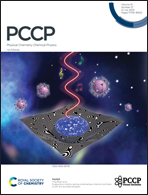Giant tunneling electroresistance in a 2D bilayer-In2Se3-based out-of-plane ferroelectric tunnel junction
Abstract
Ferroelectric tunnel junctions (FTJs) have great potential in nonvolatile memory devices and have been extensively studied in recent years. Compared with conventional FTJs based on perovskite-type oxide materials as the barrier layer, two-dimensional (2D) van der Waals ferroelectric materials are advantageous in improving the performance of FTJs and achieving miniaturization of FTJ devices due to the features such as atomic thickness and ideal interfaces. In this work, we present a 2D out-of-plane ferroelectric tunnel junction (FTJ) constructed using graphene and bilayer-In2Se3. Using density functional calculations combined with the nonequilibrium Green's function technique, we investigate the electron transport properties in the graphene/bilayer-In2Se3 (BIS) vdW FTJ. Our calculations show that the FTJ we constructed can be switched from ferroelectric to antiferroelectric by changing the relative dipole arrangement of the BIS to form multiple nonvolatile resistance states. Since the charge transfer between the layers varies for the four different polarization states, the TER ratios range from 103% to 1010%. The giant tunneling electroresistance and multiple resistance states in the 2D BIS-based FTJ suggest that it has great potential for application in nanoscale nonvolatile ferroelectric memory devices.



 Please wait while we load your content...
Please wait while we load your content...